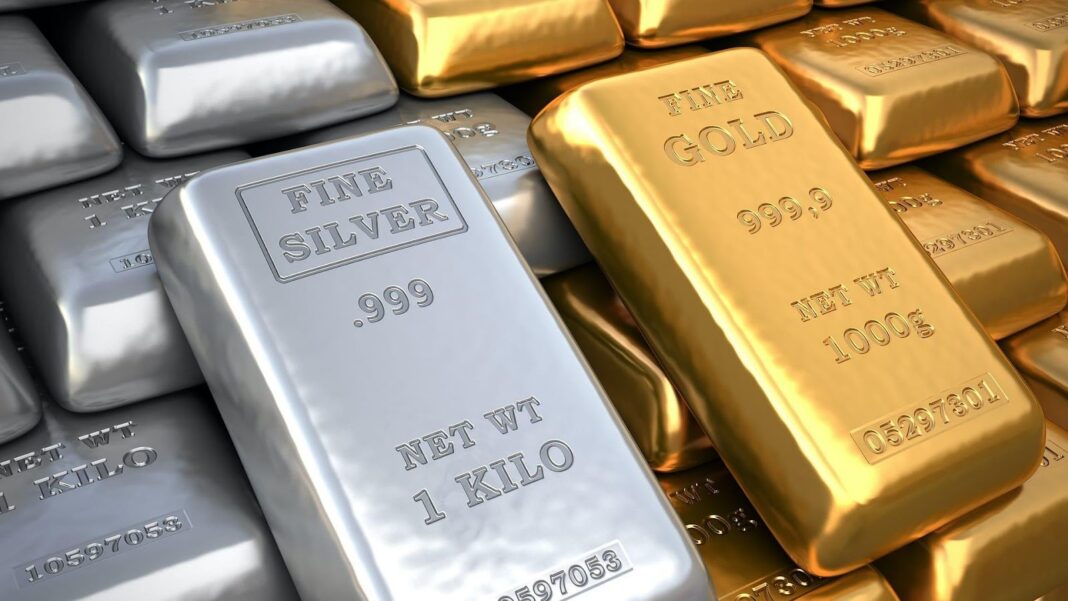Silver and gold have always been in high demand, and their use in jewelry, coins, bullion, and ETFs has only increased in recent years. But where do you even begin, and what kinds of precious metals are investors most commonly interested in purchasing?
The following is a simplified summary of investing in precious metals that we have compiled using our four most important takeaways. Before making any decisions on investments in precious metals, you should discuss your options with a financial advisor or another qualified professional. The material shown here is for informational purposes only.
Why do so many individuals put their money into precious metals?
The most common use for precious metals is as a form of wealth storage, and this use dates back many years. As an alternative to cash when interest rates are low, they can provide a strong long-term return, provide a hedge against inflation, falling equities as well as highly liquid. Additionally, they provide a currency hedge as well as bring no credit risk to the table.
When seeking greater diversity and elevated risk returns, numerous investors look to precious metals as alternatives to conventional assets such as equities and bonds. This is because precious metals offer higher returns per unit of risk.
Check out this link https://www.youtube.com/channel/UCSdQxZ3fu0WumvQubWCGxXQ to learn more about the benefits of making this type of investment.
What differentiates gold, silver, and platinum from one another?
As is the case with equities and shares, the type of metal an investor chooses to put their money into relies on their particular circumstances, the constraints of their budget, and the amount of time they plan to hold their investments. Investors can utilize precious metals to enhance alternative asset classes including broad-based portfolios, despite the fact that each comes with its own unique set of perks and dangers.
There are a few key distinctions between each type of metal, which are as follows:
Gold’s value is impacted by a market that is open around the clock, with supply and demand on a worldwide scale accounting for less of a role in determining price. Gold’s value has a tendency to remain stable during times of economic uncertainty.
Gold “has given significant portfolio diversity since it is uncorrelated to stocks,” as stated in the aforementioned article. Generally speaking, it performs the best when equities markets are performing the worst.
The benefit of silver is that it can be purchased in smaller quantities at a lower cost per ounce than other precious metals, such as gold. This makes it more approachable for investors who are just starting out or who have more limited financial resources. In terms of its applications, silver is utilized almost exclusively in the industrial sector, particularly for the production of medical equipment, solar panels, batteries, and various electrical products. Read more here.
The silver price typically follows closely with the expansion of the economy, which also contributes to the commodity’s high degree of volatility. Taking a look at the gold to silver ratio, in conjunction with the guidance of a qualified financial adviser, can assist investors in making an educated selection regarding the precious metal in which they should invest at any particular time.
Platinum, which is likewise traded continuously like gold, has historically had a higher price than gold up until relatively recently. Similar to silver, it finds widespread application in both the industrial and jewelry sectors, but the geopolitical climate of the regions in which it is mined has a significant impact on its price. At the moment, Russia, South Africa, Canada, Zimbabwe, the United States of America, and Australia are the countries that provide the majority of the world’s produced platinum.
The fact that platinum typically has a negative connection with other commodities and has, historically speaking, performed well during periods of economic recovery is the primary benefit of investing in platinum.
Gold and silver coins and bars
Genuine silver and gold coins, cast as well as minted bars are available in a variety of sizes as well as purchase options to accommodate investors with differing budgets.
However, if investors choose to store their bullion at home, they will need to ensure that they have adequate insurance and security measures in place. When purchasing from a reputed mint, investors have the option of buying, selling, and storing high-value precious metals in safe vaults.
Exchange-traded funds
A stockbroking account is where the majority of investors hold and manage their precious metals holdings. The investors have the option of converting their holdings into any type of bullion bar, although this is a wonderful choice for those who would prefer not to store gold at their houses.
Where are the best places for investors to buy precious metals?
When purchasing gold or silver that has been adequately assayed, it is crucial to do so from a dealer who is known for their reliability and who offers a price that is comparable to other sellers in the market. It is also important to be aware that the prices of precious metals shift during the day in response to shifting political, economic, and other conditions on a worldwide scale.















